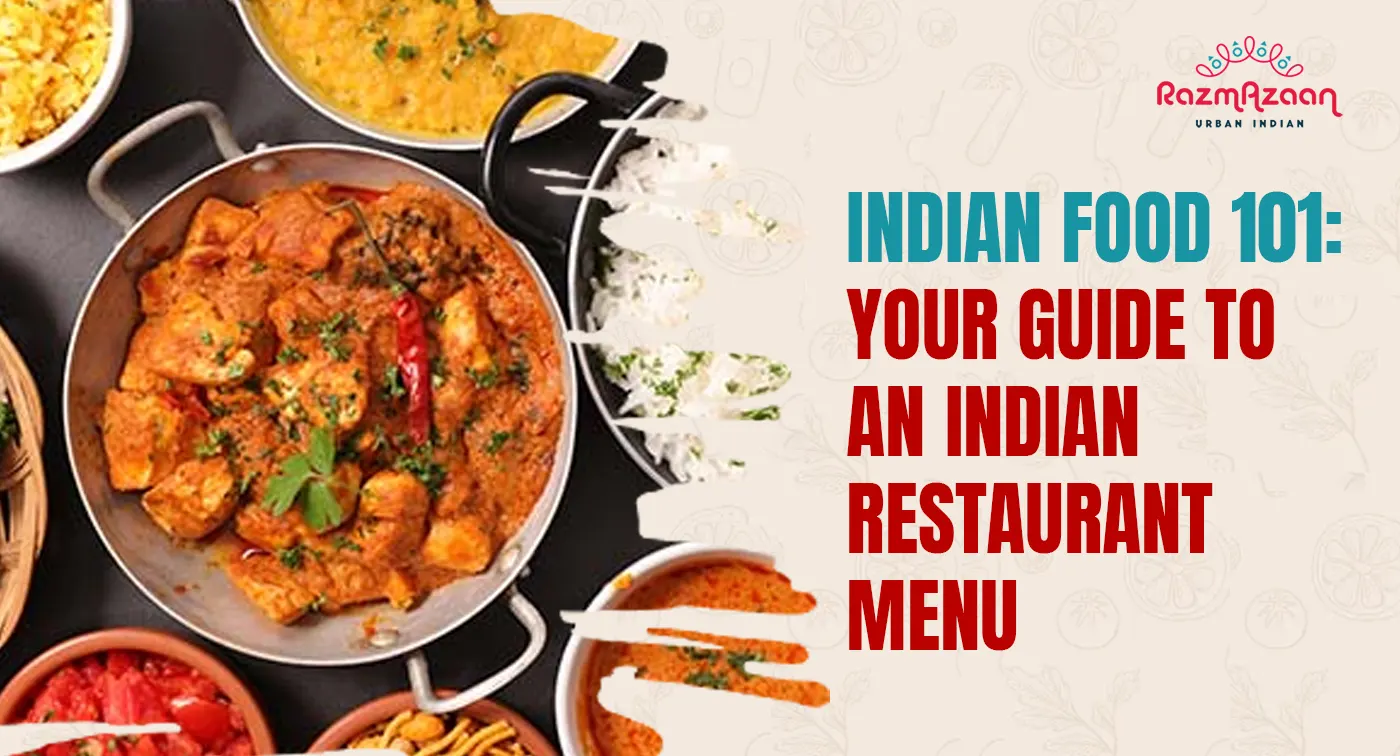Indian cuisine is a feast for the senses, celebrated for its diversity, rich flavors, and vibrant spices. With culinary traditions spanning thousands of years, Indian food showcases a unique blend of regional and cultural influences. Navigating an Indian restaurant menu, however, can be a bit overwhelming for newcomers due to the sheer variety of options. This guide is designed to help you confidently explore an Indian restaurant menu and discover dishes that suit your palate.
Regional Indian Cuisines
Indian cuisine is as diverse as the country itself, with each region offering distinct flavors and specialties.
1. North Indian Cuisine
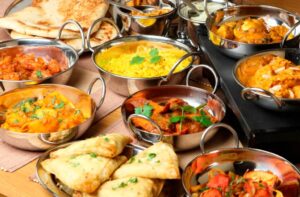
- Famous Dishes:
- Tandoori Chicken: Marinated in yogurt and spices, then cooked in a clay oven for smoky, tender perfection.
- Naan Bread: Soft and fluffy bread, perfect for scooping up rich curries.
- Characteristics:
- North Indian food is known for its use of dairy, such as cream, butter, and yogurt, resulting in rich and creamy sauces.
- Common ingredients include wheat-based breads and aromatic spices like cardamom and cloves.
2. South Indian Cuisine
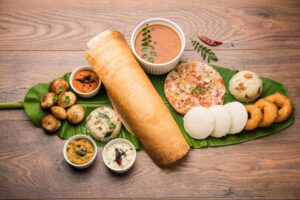
- Popular Dishes:
- Dosa: A thin, crispy rice crepe, often served with chutneys and sambar (a lentil-based vegetable stew).
- Idli: Soft, steamed rice cakes, a staple breakfast dish in the south.
- Characteristics:
- Focuses on fermented rice and lentil dishes, often flavored with coconut, curry leaves, and mustard seeds.
- Spicier and tangier compared to North Indian cuisine.
Popular Indian Dishes
1. Appetizers
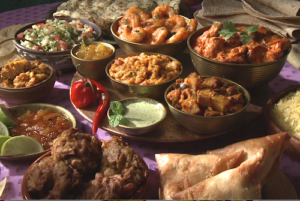
- Samosas: Deep-fried pastry pockets stuffed with spiced potatoes, peas, or meat.
- Pakoras: Crispy fritters made with vegetables or chicken, coated in a chickpea flour batter.
- Chaat: A popular street food featuring a medley of sweet, tangy, and spicy flavors with ingredients like chickpeas, yogurt, and tamarind chutney.
2. Entrees
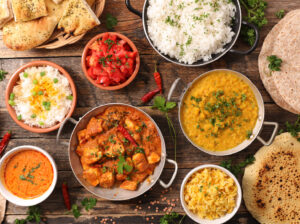
- Chicken Tikka Masala: Tender chicken chunks in a creamy tomato-based sauce.
- Palak Paneer: Spinach cooked with cubes of paneer (Indian cottage cheese) and spices.
- Chana Masala: A hearty chickpea curry with a tangy tomato and onion base.
- Biryani: Fragrant rice cooked with aromatic spices, vegetables, or meats like chicken, lamb, or shrimp.
3. Vegetarian Options
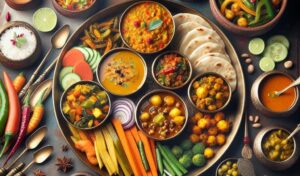
- Saag Aloo: Spinach and potatoes cooked with a blend of spices.
- Mattar Paneer: Peas and paneer simmered in a mildly spiced tomato-based curry.
- Dal Makhani: A creamy lentil dish made with black lentils and kidney beans.
4. Seafood Options
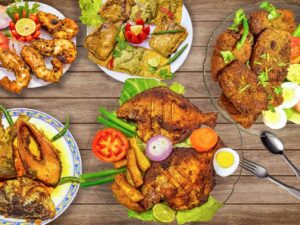
- Fish Tikka: Marinated fish fillets grilled to perfection.
- Shrimp Biryani: Aromatic rice cooked with shrimp and spices.
- Crab Curry: A rich and flavorful dish made with fresh crab and a spiced coconut gravy.
5. Desserts

- Gulab Jamun: Deep-fried milk dumplings soaked in sugar syrup.
- Ras Malai: Soft cheese patties soaked in sweetened, flavored milk.
- Jalebi: Crispy, spiral-shaped treats soaked in saffron syrup.
Indian Bread and Rice
No Indian meal is complete without bread or rice to complement the main dishes.
1. Indian Breads
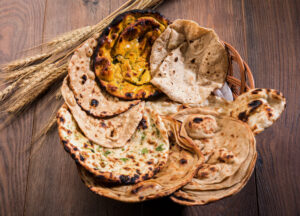
- Naan: A soft, oven-baked bread, often served plain, buttered, or stuffed with garlic or cheese.
- Roti: A whole-wheat flatbread, ideal for scooping up curries.
- Paratha: A layered, flaky bread, sometimes stuffed with spiced potatoes, paneer, or other fillings.
2. Rice Dishes
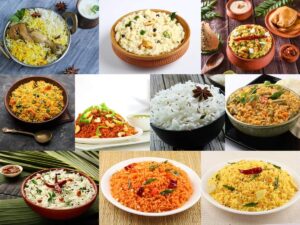
- Basmati Rice: Long-grain rice with a fragrant aroma, a staple in Indian meals.
- Saffron Rice: Rice infused with saffron for a vibrant yellow hue and delicate flavor.
- Pulao: Rice cooked with vegetables, nuts, and mild spices.
Indian Spices and Flavor Profiles
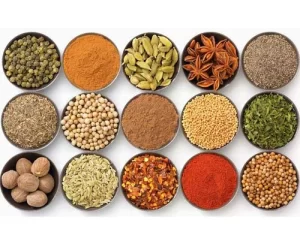
Indian cuisine is renowned for its intricate use of spices, which create its unique flavor profiles.
1. Common Spices
- Turmeric: Adds a golden color and earthy flavor.
- Cumin: Offers a warm, nutty taste.
- Coriander: Delivers a fresh, citrusy note.
- Garam Masala: A blend of spices used to enhance the depth of flavor.
2. Flavor Profiles
- Indian dishes often balance spicy, sweet, sour, and umami flavors to create a harmonious taste experience.
3. Chili Levels
- Many dishes can be adjusted to your spice tolerance: mild, medium, or hot. Don’t hesitate to ask your server for recommendations.
Indian Restaurant Ordering Tips
1. Asking Questions
Don’t hesitate to ask your server about unfamiliar dishes, spice levels, or ingredients. They’ll help you find dishes that suit your taste and dietary preferences.
2. Combining Dishes
Pair entrees with complementary sides like naan or rice. For example, enjoy Chicken Tikka Masala with garlic naan or Biryani with cooling raita.
3. Dietary Restrictions
Indian cuisine offers plenty of options for vegans, vegetarians, and gluten-free diners. Ask about substitutions or modifications to meet your dietary needs.
Conclusion
Indian cuisine is a treasure trove of flavors and textures, offering something for everyone. From creamy curries and fragrant biryanis to crispy samosas and indulgent desserts, exploring an Indian restaurant menu is a delightful journey into one of the world’s richest culinary traditions.
For the best Indian dining experience in Muscat, visit RazmAzaan Indian Restaurant, where authentic flavors meet impeccable hospitality. Embark on a flavorful adventure and discover why we’re the top choice for Indian cuisine in the city!


